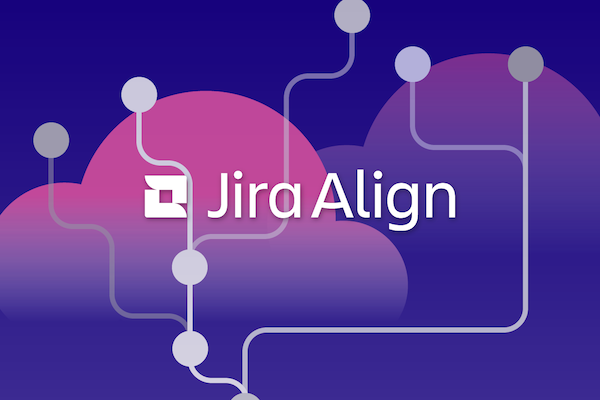If you have ever been involved in scaling up agile across your organization, you know that it’s hard to manage, visualize and share all data. In digital transformation and implementing scaled agile, it is common to have teams from executive to development working with different tools.
Read on and learn how you can use Jira Align to solve the challenges with visualization, alignment and collaboration, and how it synchronizes with Jira Software.
What Jira Align is
Atlassian’s Jira Align, is an agile planning tool for implementing scaled agile and digital transformation. It supports agile frameworks and is organized after agile skill from enterprise level, to portfolio, program and team level.
You can use Jira Align with any number of agile frameworks. So just use the framework that best suits your digital transformation. Some examples:
- SAFe - Scaled Agile Framework
- LeSS - Large Scale Scrum
- DA - Disciplined Agile
- Scrum@Scale
- Spotify
- Custom or hybrid frameworks
Jira Align is a cloud product that can connect to multiple Jira instances supporting Jira Software Server, Data Center, and Cloud.
Work in Jira Align can be divided into four phases:
- Work
- Corporate strategy
- Value
- Learning
Both Jira Align and Jira are used for planning and status phases, but the execution takes place in Jira. Development teams use Jira on a day-to-day basis to manage their backlogs and execute against stories. Work items like epics, stories and tasks, as well as teams and sprints sync between Jira and Jira Align. This makes all work visible in real time as team-level data is aggregated in Jira Align. Work can be visualized across every level and you can see what is completed and whether or not work is aligned with objectives and goals.
Hear directly from our experts. Watch our on-demand webinar: Introducing Jira Align
Why organizations use Jira Align
First of all, Jira Align was built to solve the challenge of agile at scale. Product, portfolio, and development managers have a single platform to manage strategy and to report on progress. Teams can collaborate in real time, and remove silos along the way.
Compared to Advanced Roadmaps in Jira Software, you have portfolio management, stronger strategic alignment and much more reporting options in Jira Align. Advanced Roadmaps works best for up to 20 agile teams (50-150 people at a time), whereas with Jira Align you can have hundreds to thousands of users at multiple levels of your organization.
In April 2021 Gartner named Atlassian as a leader in the Enterprise Agile Planning Tools Magic Quadrant for the fourth time. Gartner gave Jira Align the highest score for the SAFe® use case, due to its comprehensive support for the framework, including multi-tier value streams, program room for Program Increment (PI) planning, and checklists to guide users through tasks.
How to get started
We recommend that you start at the program and team level. Get started with:
- planning work
- tracking progress
- managing dependencies and reporting
At the program level the product manager manages ideas and features, prioritizes the backlog and uses roadmaps for tracking progress. The program manager uses the program kanban and roadmaps for PI planning. Dependencies between teams are managed with a commitment workflow can be visualized across teams and between programs. Configurable dashboards provide the live status of work in progress.
So to summarize: Jira Align is a perfect fit for enterprises that have gone through an agile transformation and want to scale their tooling. It is designed to provide the visibility, alignment, and productivity that organizations need to succeed with Scaled Agile.
Published: Sep 8, 2021
Updated: Apr 20, 2022


